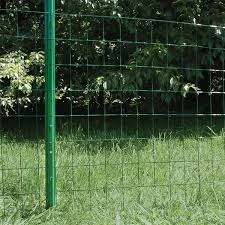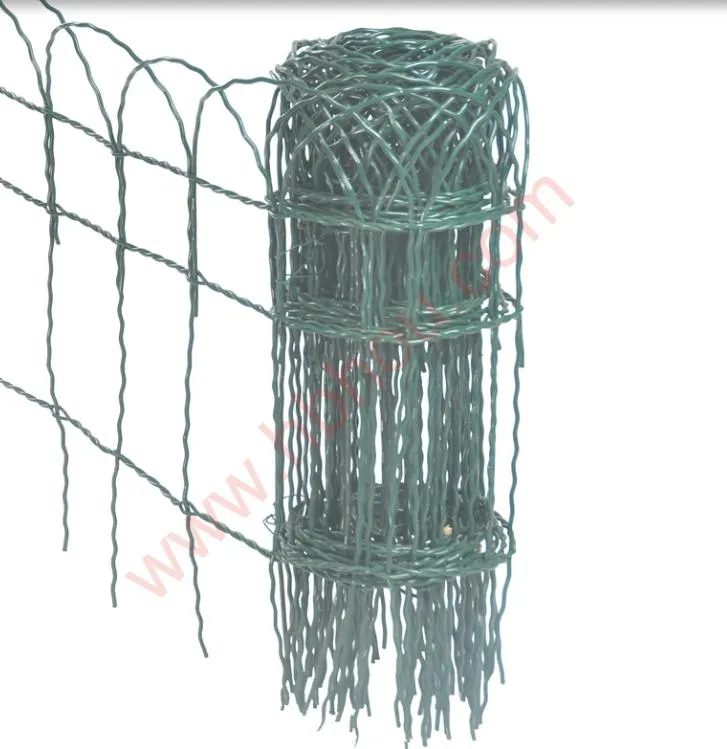Super Rabbit or Dog Guard Garden Fence Roll Hot Dipped Galvanized
Choosing the right dog fence is essential for pet owners who wish to ensure the safety and security of their furry companions. With various options available, selecting the ideal fence can be both an art and a science. This article delves into the most notable dog fence options available today, giving readers an insight into their functionality, advantages, and potential downsides.
Invisible Dog Fences
An invisible dog fence is a popular choice among pet owners who prefer a non-intrusive and aesthetically pleasing option. These fences use underground wiring to create a boundary for dogs, combined with a collar that delivers a mild electrical correction when the dog approaches the boundary.
From a user-experience perspective, an invisible fence is unobtrusive and maintains the property's visual appeal. However, it requires professional installation and training for the dog, ensuring that your pet learns the boundaries effectively. Expertise in dog behavior highlights the importance of this training phase to avoid confusion and anxiety in pets.
Electric Dog Fences
Electric dog fences, while akin to invisible fences, involve visible components such as a physical wired base. This setup is primarily beneficial in settings where visible barriers enhance boundary clarity for the dog. Specialized experts often recommend electric fences for their reliability, as they tend to offer a tangible guide for your pet. However, potential downsides include the need for consistent maintenance and the possibility of the electric current causing distress to some animals, which is an ethical consideration pet owners need to weigh.
Wireless Dog Fences
Wireless dog fences provide an advanced, convenient solution, employing a centralized transmitter that creates a circular boundary around your property by sending a signal to the dog’s receiver collar. The device's ease of installation is a perk, as it requires no physical boundary setup. This option is particularly favored among renters and those who frequently move, owing to its portability.
However, wireless fence systems are sometimes criticized for their lack of precision due to interference from metal objects or varied topology. Consulting with technology experts can provide insights into optimizing the system for your particular property layout, ensuring reliability and consistency.
Physical Dog Fences
Traditional physical fences remain a staple for many dog owners. Options range from wooden and chain-link to vinyl and composite fencing, each material offering varying degrees of durability, maintenance requirements, and aesthetic value. Physical fences provide a clear and reliable barrier, giving pets a secure enclosure without the discomfort of electrical corrections.dog fence options
From a construction and durability viewpoint, wooden fences are often praised for their natural look, although they require regular maintenance to prevent rot and weathering. Conversely, vinyl and composite fences offer low maintenance along with aesthetic versatility, suitable for diverse landscaping preferences.
Temporary Dog Fences
Temporary fences are a versatile option for pet owners who need a flexible solution. These portable fences offer convenience for those attending events, camping, or enhancing indoor safety temporarily. Purchased mainly for short-term solutions, their lightweight structure and easy assembly benefit those with an active lifestyle requiring adaptability.
The expertise of manufacturers often varies, with some providing highly durable panels capable of withstanding a pet's stubbornness while others might not hold up as well over time. Expert advice on construction quality when purchasing portable solutions is crucial to ensure the safety of your pet.
Training and Traditional Methods
Beyond product-oriented solutions, training remains integral in maintaining an effective boundary. Experts in canine behavior advocate for a combination of physical or electronic fence systems supplemented by behavioral training. This holistic approach ensures that pets understand the significance of fenced boundaries, promoting security even when traditional barriers are not present or when systems fail.
The Trust Factor
Trustworthiness in dog fencing solutions is paramount. Pet owners must feel confident that the chosen method will adequately protect their pets without causing harm or unnecessary stress. Reviews from fellow dog owners, recommendations from veterinarians, and consultations with certified fencing specialists form a critical trust-building framework in making an informed decision.
In conclusion, selecting the best dog fence option hinges on several factors, including property layout, pet behavior, aesthetic preferences, and ethical considerations. As pet safety remains a top priority, thoughtful evaluation combined with professional insights ensures a secure, harmonious environment for both pets and their owners.


















